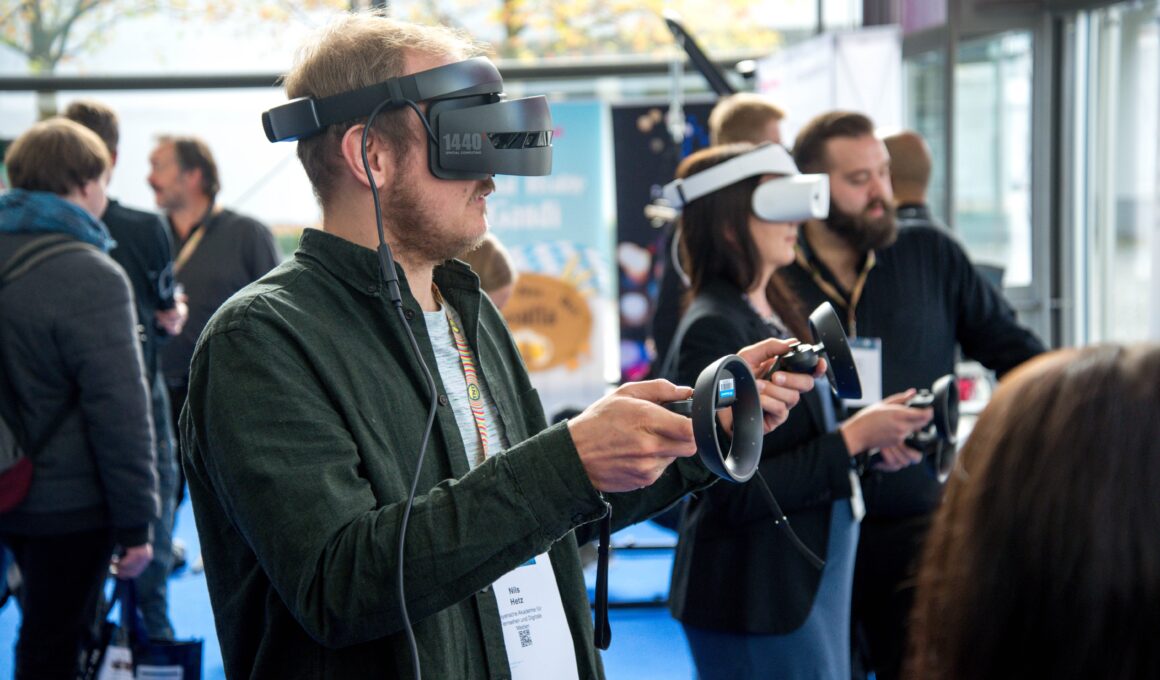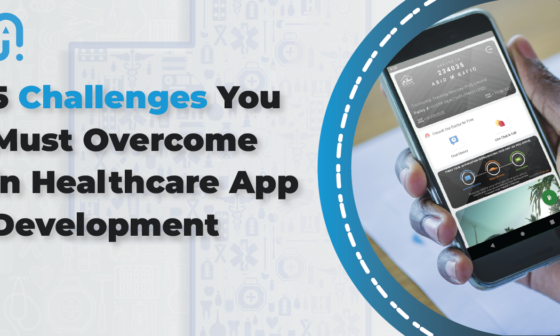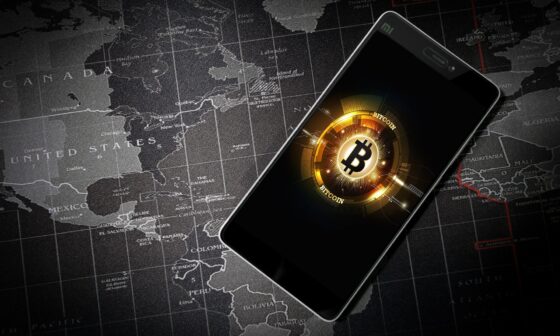As technology continues to evolve at an unprecedented pace, Augmented Reality (AR) and Virtual Reality (VR) have emerged as transformative technologies with the potential to reshape industries across the globe. These immersive technologies have captured the imagination of businesses, developers, and consumers alike, opening up new frontiers and revolutionizing the way we interact with digital content. AR and VR app development has played a crucial role in expanding the possibilities of these technologies, enabling the creation of innovative applications and experiences.
Augmented Reality and Virtual Reality: A New Era of Immersive Experiences
AR and VR technologies offer a gateway to experiences that go beyond traditional screens, blurring the boundaries between the physical and digital worlds. With the use of smartphones, tablets, or specialized headsets, users can enter a world where digital content is seamlessly integrated into their surroundings, creating immersive and interactive experiences.
The Evolution of AR and VR
The roots of AR can be traced back to the 1960s when researchers first experimented with head-mounted displays. However, it wasn’t until the 1990s that the term “Augmented Reality” was coined and the technology began to gain traction. Over the years, advancements in hardware and software have propelled AR into various industries, including healthcare, architecture, education, marketing, and entertainment.
VR, on the other hand, has a similar timeline of development. The concept of VR can be traced back to the 1960s, with the invention of the first VR headset. However, it wasn’t until the 1990s that VR became more accessible to consumers. Today, VR technology allows users to enter a completely digital environment and interact with it in a realistic and immersive way.
The Power of Immersion
One of the key strengths of AR and VR lies in their ability to create a sense of immersion. AR overlays digital content onto the real world, enhancing our perception and understanding of the environment. For example, AR can be used to display information about landmarks and points of interest as we explore a new city.
VR, on the other hand, transports us to entirely virtual worlds, offering an unparalleled level of immersion. With VR, we can explore places and scenarios that may be impossible or impractical in the physical world. Whether it’s diving into the depths of the ocean or walking on the surface of Mars, VR enables us to experience things beyond our wildest imaginations.
Transforming Industries with AR and VR
The impact of AR and VR extends across various industries, revolutionizing the way businesses operate and users engage with their surroundings. Let’s explore some key sectors that have been significantly transformed by these technologies.
Healthcare: Revolutionizing Diagnosis and Treatment
AR and VR have the potential to revolutionize healthcare by enhancing diagnosis, treatment, and patient care. In surgical procedures, AR can overlay real-time patient data and virtual representations of internal organs, providing surgeons with valuable insights and improving surgical precision. Additionally, VR can be used for medical training, allowing students and professionals to practice complex procedures in a safe and controlled environment.
Education: Immersive Learning Experiences
AR and VR have ushered in a new era of immersive learning experiences. In the classroom, students can use AR to visualize and interact with complex concepts, bringing abstract ideas to life. For example, they can explore the human anatomy in 3D or take virtual field trips to historical sites. VR, on the other hand, can transport students to virtual environments where they can engage in hands-on learning activities and simulations.
Architecture and Design: Envisioning Spaces
AR and VR have transformed the way architects and designers envision and present their creations. With AR, architects can overlay virtual designs onto physical spaces, allowing clients to visualize and experience buildings before they are constructed. VR, on the other hand, enables immersive walkthroughs of architectural designs, giving stakeholders a realistic sense of the space and its potential.
Gaming and Entertainment: Immersive Experiences
Gaming and entertainment have been at the forefront of VR adoption, providing users with immersive and captivating experiences. VR gaming allows players to enter virtual worlds and interact with them in a way that was previously unimaginable. Additionally, AR has enhanced the gaming experience by overlaying digital content onto the real world, creating interactive and engaging gameplay.
Retail and E-commerce: Transforming the Shopping Experience
AR and VR have revolutionized the retail and e-commerce industries, providing innovative ways for customers to interact with products. AR allows users to try on virtual clothes and accessories, visualize furniture in their homes, or see how cosmetic products will look on their faces. VR, on the other hand, offers virtual shopping experiences, allowing customers to explore virtual stores and interact with products in a fully immersive environment.
Manufacturing and Engineering: Streamlining Processes
AR and VR have streamlined processes in the manufacturing and engineering sectors. With AR, workers can access real-time information and instructions overlaid onto their field of view, improving efficiency and reducing errors. VR can be used for virtual prototyping and simulations, enabling engineers to test and optimize designs before physical production, saving time and resources.
The Breakthrough: Apple Vision Pro
Apple Vision Pro represents a groundbreaking advancement in the AR and VR space. This spatial computer seamlessly integrates digital content into users’ environments, projecting high-resolution displays directly into their eyes. With eye tracking and gesture-based interfaces, Apple Vision Pro offers a novel and intuitive way to interact with the digital world.
The spatial computing capabilities of Apple Vision Pro unlock endless possibilities for businesses and industries. Professionals can visualize complex data, prototypes, and simulations in a three-dimensional context, making it easier to analyze, collaborate, and make informed decisions. The seamless integration of AR and VR functionalities empowers users to explore both real and virtual environments, expanding the horizons of what is possible.
Overcoming Challenges and Limitations
While AR and VR offer immense potential, they also come with challenges and limitations that need to be addressed for wider adoption and success. Some of these challenges include:
Hardware Limitations
AR and VR technologies require specialized hardware, such as headsets or smart glasses, which can be expensive and bulky. As technology advances, the focus is on developing more affordable, lightweight, and user-friendly devices to enhance accessibility and comfort.
Content Creation and Development
Creating compelling and immersive AR and VR experiences requires specialized skills and resources. Businesses need to invest in content creation and development to deliver high-quality experiences that engage and captivate users.
User Comfort and Safety
Extended use of AR and VR can lead to discomfort and motion sickness for some individuals. Designers and developers need to prioritize user comfort and safety by minimizing latency, optimizing frame rates, and providing breaks to prevent discomfort.
The Future of AR and VR
As technology continues to evolve, the future of AR and VR holds exciting possibilities. Here are some trends and developments to watch out for:
5G and Cloud Computing
The rollout of 5G networks and advancements in cloud computing will enhance the capabilities of AR and VR, enabling faster data transfer, lower latency, and more complex and immersive experiences. This will open up new possibilities for real-time collaboration, remote training, and cloud-based content delivery.
AI Integration
The integration of Artificial Intelligence (AI) with AR and VR will enhance the intelligence and interactivity of these technologies. AI algorithms can analyze user behavior and preferences, personalize experiences, and provide real-time feedback and guidance. This will further enhance the immersion and engagement of users.
Wearable Devices
The development of lightweight and wearable AR and VR devices will make these technologies more accessible and convenient for everyday use. The integration of AR and VR functionalities into devices like smart glasses and contact lenses will enable users to seamlessly augment their reality or enter virtual worlds with ease.
Conclusion
AR and VR have emerged as transformative technologies with the power to reshape industries and revolutionize the way we interact with digital content. From healthcare and education to retail and entertainment, these immersive technologies offer innovative ways to engage users and enhance experiences. The breakthrough Apple Vision Pro device represents the next frontier in spatial computing, seamlessly integrating AR and VR functionalities and expanding the possibilities of these technologies.
As businesses continue to embrace AR and VR applications, we can expect even more transformative advancements in various industries. The future holds exciting possibilities, from enhanced collaboration and training to personalized experiences powered by AI. AR and VR are set to redefine the way we work, learn, and engage with the world around us, creating a future where the boundaries between the physical and digital realms are seamlessly blurred.
Avolox is a leading tech venture at the forefront of AR and VR innovation. Their expertise in AR/VR app development and spatial computing solutions has helped businesses across industries harness the power of these technologies. Embrace the possibilities of AR and VR with Avolox and unlock a new dimension of immersive experiences.







